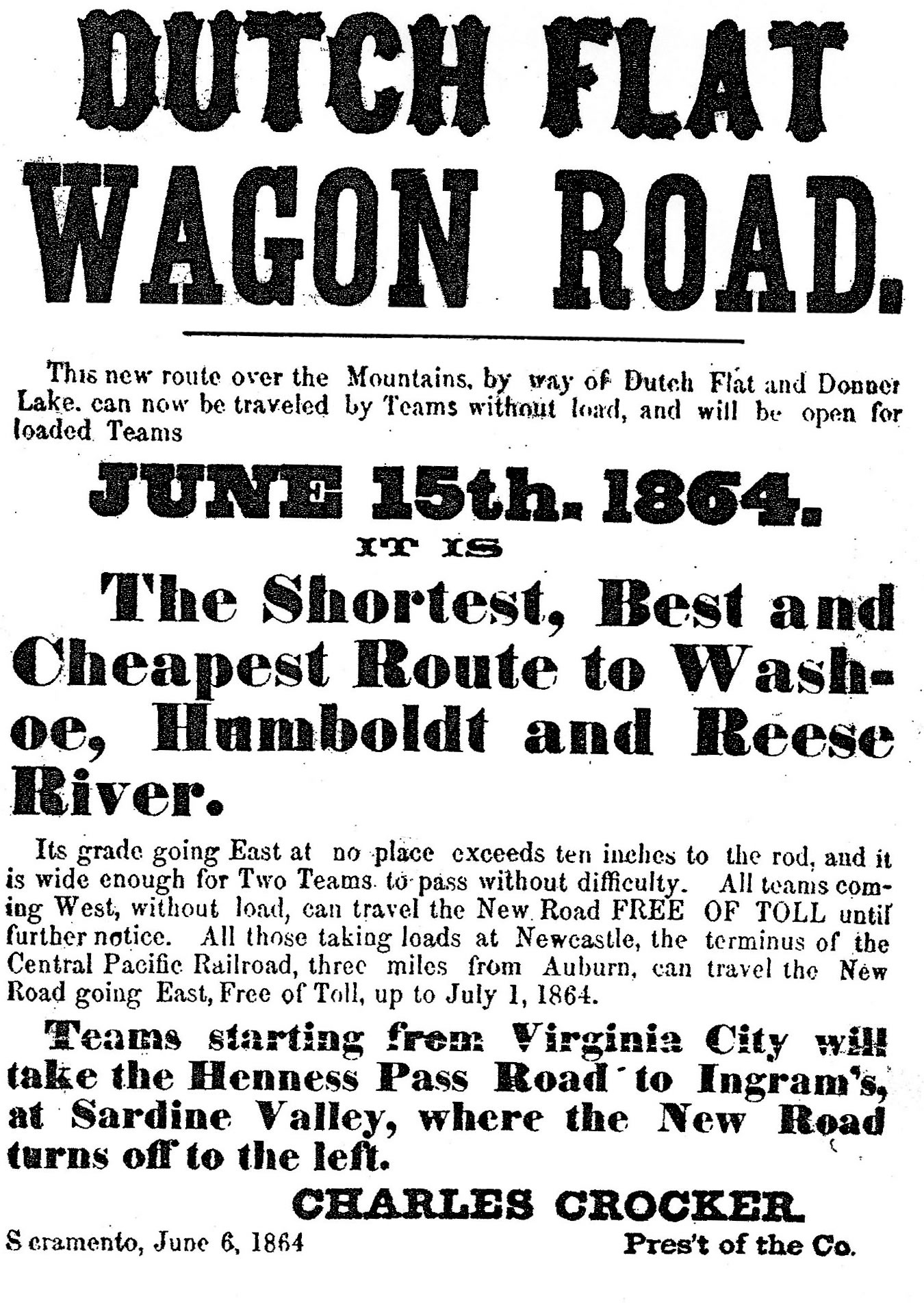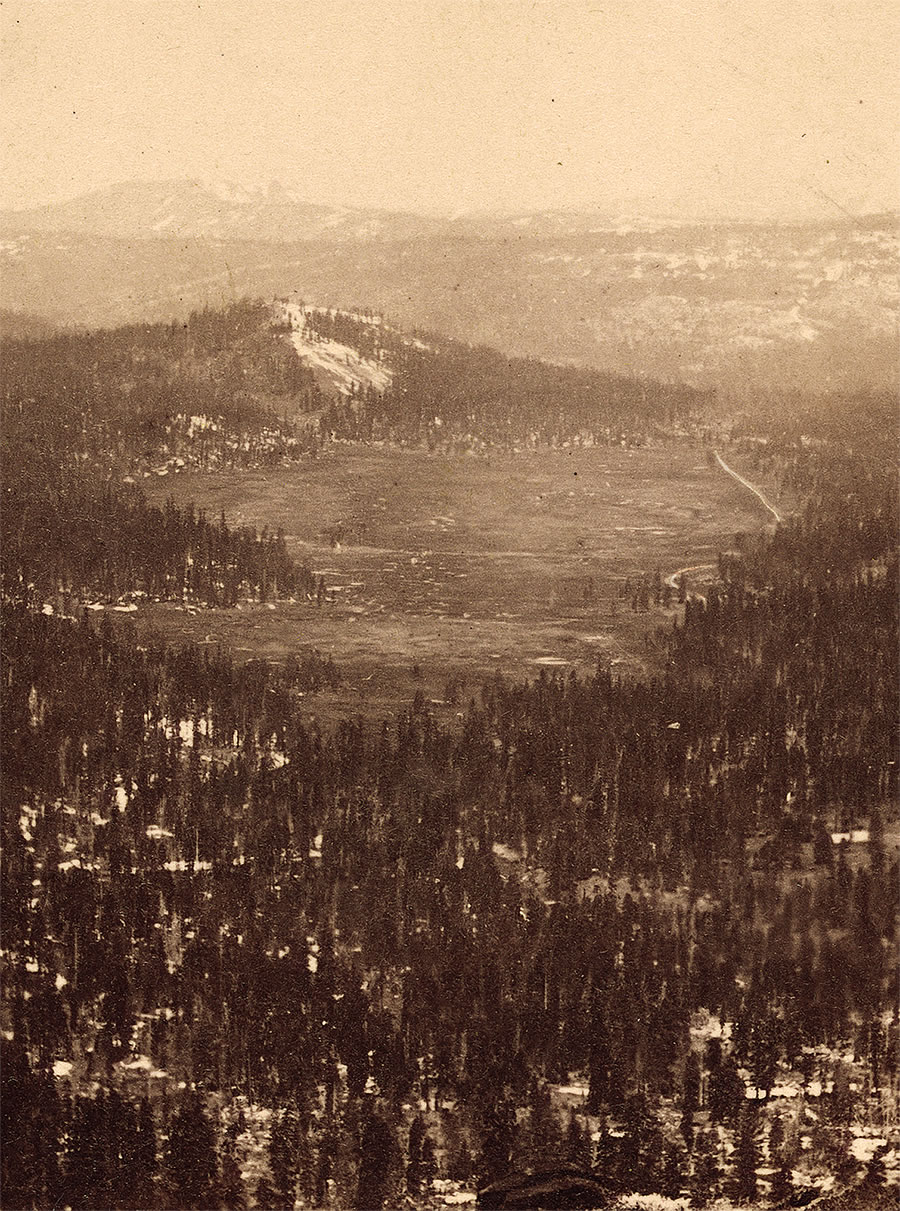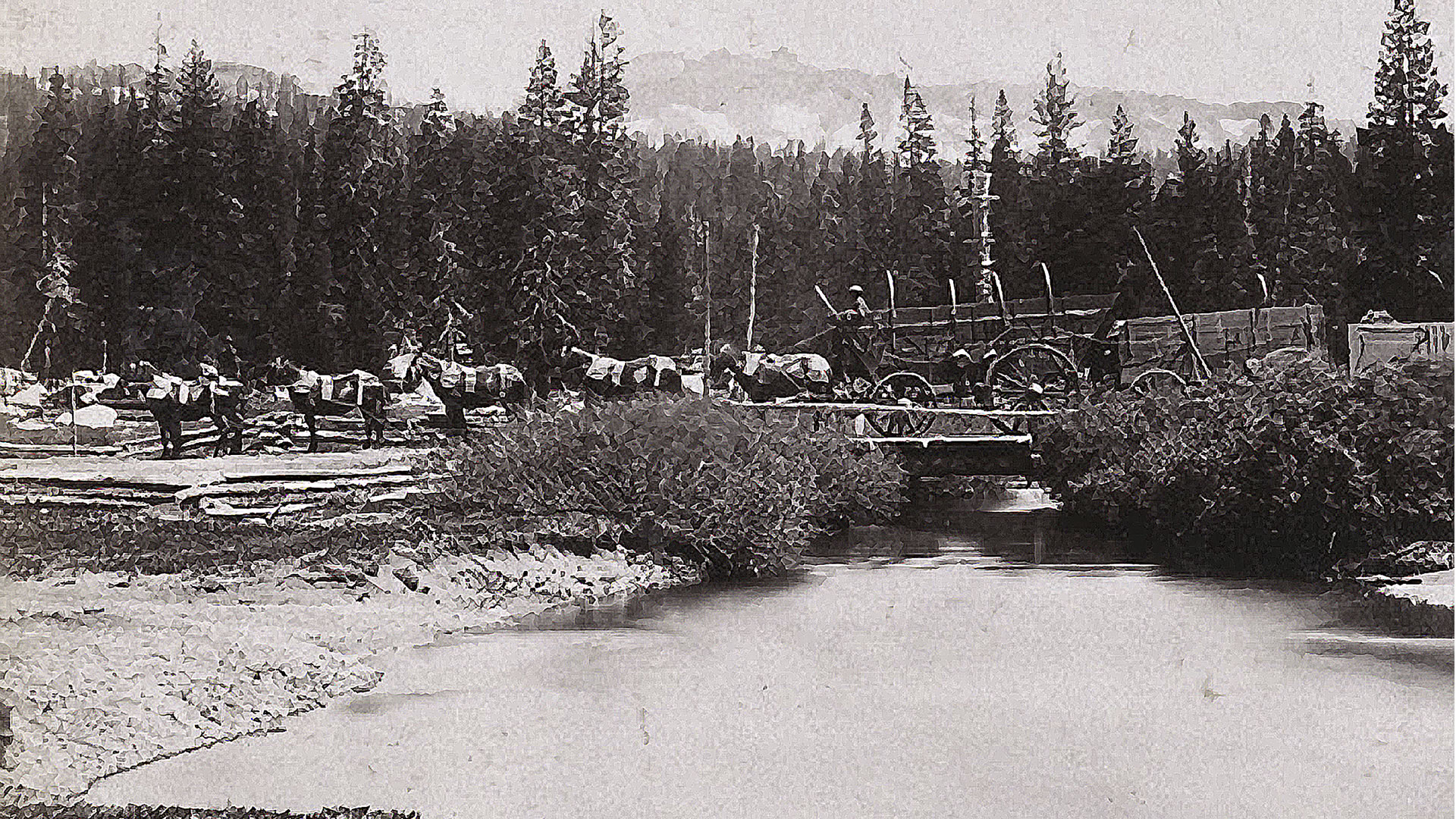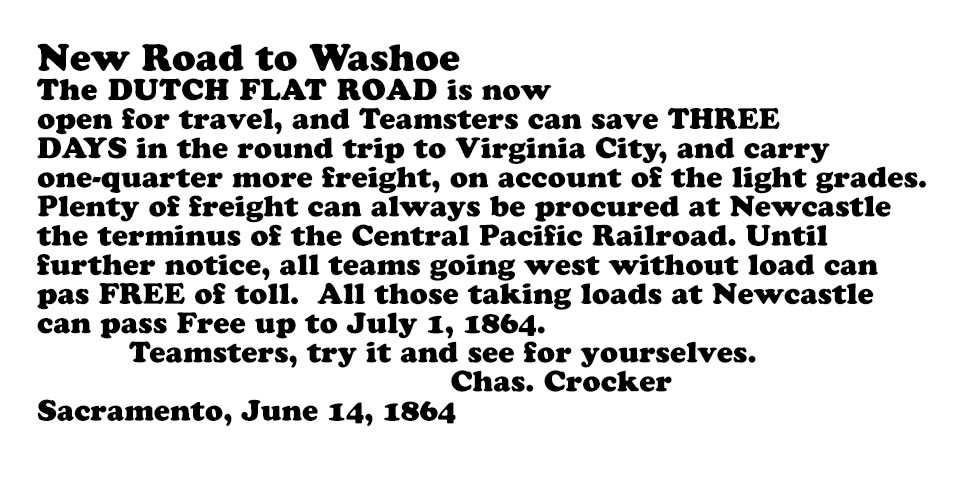 At the Pacific Crest Trailhead (PCT) where you started this Judah Loop hike, there has been a lot of history. Native Americans crossed here for thousands of years. The first wagon train to come to California with wagons came through there. The people who rescued the Donner Party, who escaped from Donner Lake, and who were rescued from Donner Lake came through there. This was also the first transcontinental highway.
At the Pacific Crest Trailhead (PCT) where you started this Judah Loop hike, there has been a lot of history. Native Americans crossed here for thousands of years. The first wagon train to come to California with wagons came through there. The people who rescued the Donner Party, who escaped from Donner Lake, and who were rescued from Donner Lake came through there. This was also the first transcontinental highway.
There was another historical episode that went right through there too: the Dutch Flat Donner Lake Wagon Rd. that went from Dutch Flat to Truckee. It was built by the "Big Four" to enable construction of the railroad and also to serve as a toll road so they could make money. This road supplanted the Coldstream Pass route when it was finished and it saw a lot of traffic.
As you stand here almost to the top of Mt. Judah, look west at Summit Valley and compare that to the old Alfred A. Hart photograph here. In the old photo the light line at the end of the valley on the right is the Dutch Flat Donner Lake Wagon Rd.
The Central Pacific was building the railroad from the west and they were hung up in the mountains. They looked enviously at the Union Pacific that was building quickly across the Great Plains and earning a lot of money from the Federal Goverment for track laid. They also looked longingly at the flat lands in Nevada knowing they could also build quickly there and earn lots of money. Meanwhile they were making only literally inches a day of progress through the Sierra granite. While the 15 Sierra tunnels were being constructed the end of track was at Cisco. At Cisco freight trains were unloaded onto freight wagons. The freight was then carried to railroad work sites, to Truckee, and even to Virginia City. Mark Twain was one of the passengers who took the train to Cisco and then hopped onto a stagecoach to continue his journey. (*good quote below)
 At the height of construction 87 train car loads of freight were offloaded onto freight wagons at Cisco. Stagecoaches, other wagons, travelers and drovers also used the Dutch Flat Rd. That was a lot of activity. That was so much activity, so much weight, that the Dutch Flat Rd. remnant in Summit Valley is still so compacted that nothing will grow on it.
At the height of construction 87 train car loads of freight were offloaded onto freight wagons at Cisco. Stagecoaches, other wagons, travelers and drovers also used the Dutch Flat Rd. That was a lot of activity. That was so much activity, so much weight, that the Dutch Flat Rd. remnant in Summit Valley is still so compacted that nothing will grow on it.
Ordinary freight and travelers were not the only travelers on the Dutch Flat Rd. When the railroad brought up the Blue Goose (formerly a locomotive) to be a donkey engine on the summit it came on a huge wagon along the Dutch Flat Rd. It was so scary to oncoming mules that they had to be blindfolded to prevent them from stampeding.

Seeing the Union Pacific build with such speed the Central Pacific decided to haul three locomotives over the summit along with 80 miles of track (each piece weighing 532 lbs.) and railroad car parts for assembling in Truckee. That all went on the Dutch Flat Rd. until it reached Mt. Judah (see the first locomotive over the summit).
To help travelers there were hotels and inns all along the Dutch Flat Rd. Once the railroad was completed in 1869 the Dutch Flat Rd. fell into disuse. Alonzo Delano, whose pen name was "Old Block" was a columnist in the 19th Century. He said of his trip along the Dutch Flat Rd. in 1873, just four years after the completion of the railroad, "The wagon road, which bad been built years ago by the railroad company for the purpose of getting supplies to their workmen, had been long neglected, and we found many bridges across smaller streams swept away, others with rotting timbers almost ready to fall and dangerous to cross. There was no object in keeping the road in repair, nobody lived on the line and for many miles there was no track of wheels but our own."

The route would not really be used again until autombiles arrived on the scene. The first auto to cross the Sierra (1901) used the old route. Others, like the first motorcyclist across the Sierra (1903) and the first bicyclist (1885)
, as well as other bicyclists later, used the snowsheds because the road was in such bad shape. Thomas Stevens who was the first to cross the Sierra on a bicycle (and then went across the country and around the world) said of the Dutch Flat Road down lower that the path next to the railroad was "occasionally rideable" whereas the road was not. The road then became part of the Lincoln Highway in 1913.
Mark Twain on crossing the Sierra:
In a letter on May 1, 1868 to his mother from San Francisco after returning from Virginia City Mark Twain said, “…. I have had the hardest trip over the sierra. Steamboat to Sacramento (balmy summer weather & the peaches & roses all in bloom) – railway to the summit (snow thirty feet deep on level ground & 100 in the drifts) 6-horse sleighs to Donner Lake – mail coaches to Coburn’s – railway to Hunter’s [near the Nevada State line] – stage-coaches to Virginia all in the space of 24 hours. Distance 150 miles. Coming back last night in a snowstorm, the two & a half hours’ sleighing (part of the time clear weather & superb moonlight,) was something magnificent – we made ten miles an hour straight along. …."

